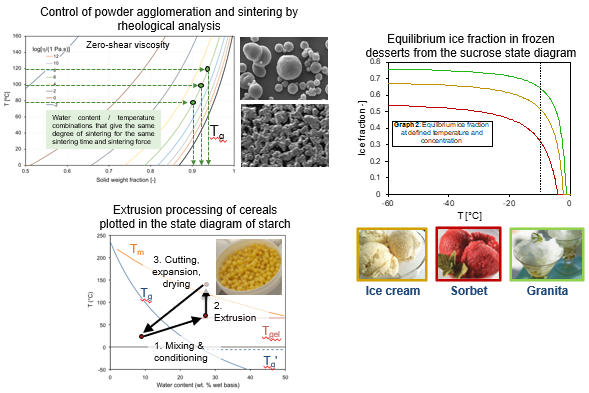
Phase behavior & processing of starches and carbohydrates
Carbohydrates, such as sucrose and lactose, and carbohydrate polymers, such as starch and maltodextrins, are common constituents found in processed foods.
Low molecular weight carbohydrates, aka “sugars”, depress the freezing point of food systems and modulate ice formation in frozen states. In the amorphous glassy state, they form hard, brittle states that are important for food texture. High contents of sugars render product very sensitive to water, warranting a tight control of processing and storage conditions.
Carbohydrate polymers serve several functions in processed foods as thickeners, binding agents, emulsifiers, clouding agents or gelling agents. Starches are furthermore the key constituents in the pasta, bakery and snack industries.
We approach the processing of carbohydrate-based foods based on the state diagram concept. State diagrams include the phase and state transitions of the principal food components as a function of water content and temperature and include the glass transition temperature (Tg), the ice melting line (Tm), the solubility line (Ts), and, for starch, the gelatinization line (Tgel). The quantitative understanding of these phase and state transitions allows for a rational way for process design and optimization, and to prediction the final product properties including acceptable storage conditions.